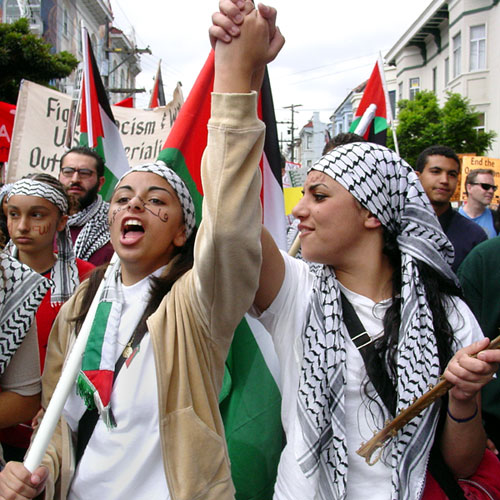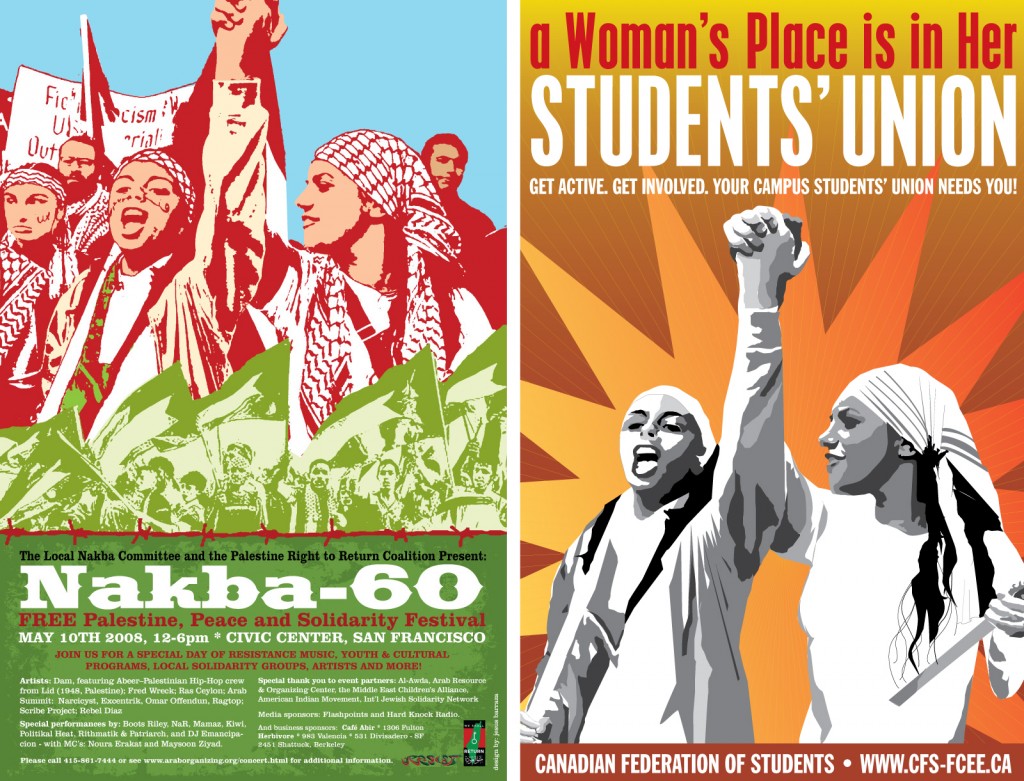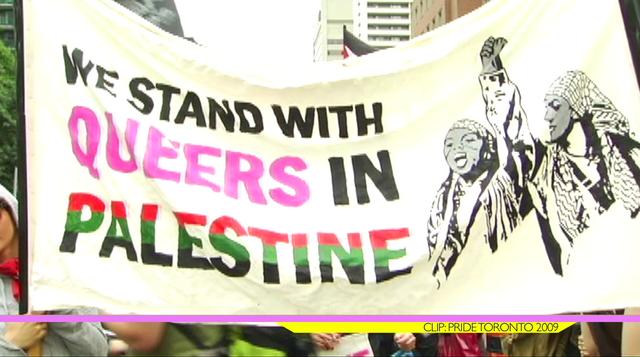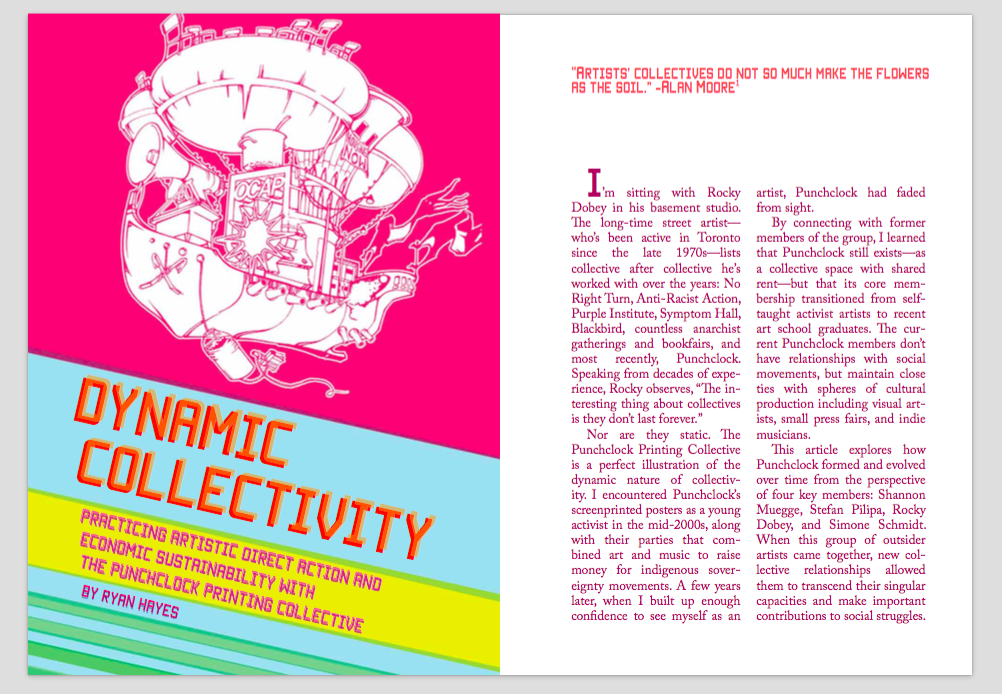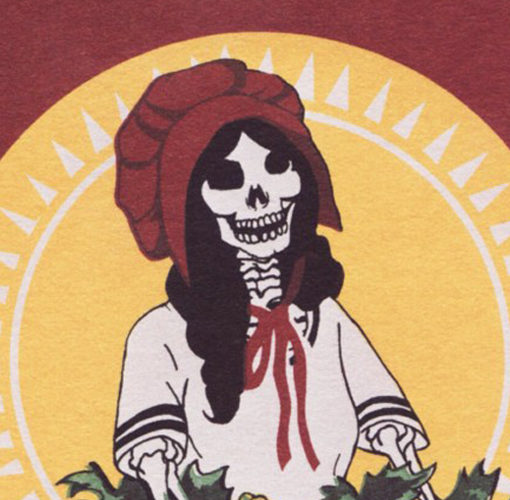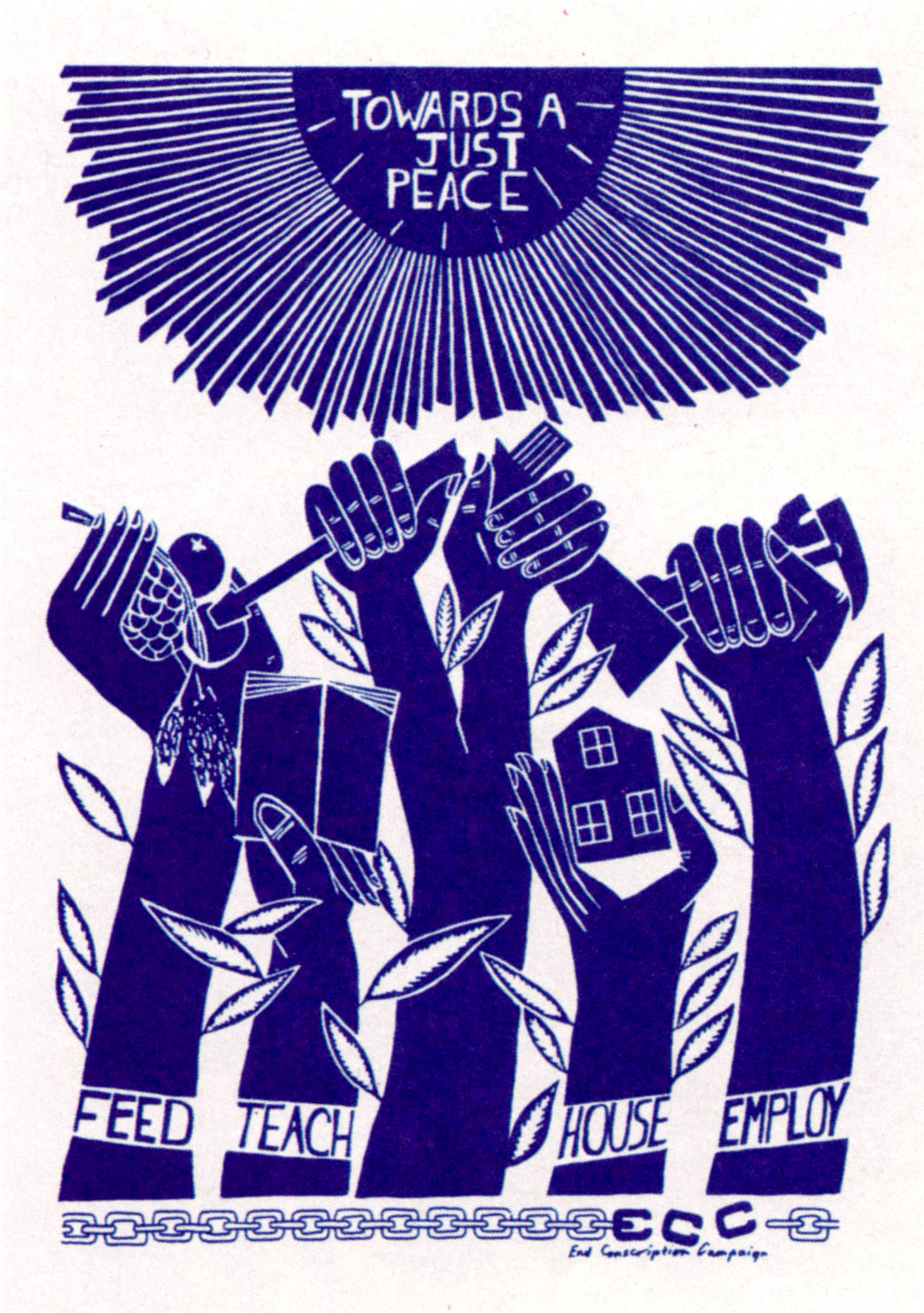Top: “Free Palestine” (~2001, San Francisco); Left: “Nakba 60” (2008) by Jesus Barraza; Right: “A Woman’s Place Is In Her Students’ Union” (~2005) by the Canadian Federation of Students
One of my go-to tools for online image research is TinEye Reverse Image Search. When you upload an image or provide a link, TinEye scours the web for every instance of the image in use. To some degree, it is able to detect similar versions of an image that may have been modified. Unfortunately, it wasn’t much help tracking down the original source of the photograph at the top of this post. The image was all over the place but seemingly never referenced.
At this point I turned to Oakland-based artist-activist Jesus Barraza from Dignidad Rebelde for help. Jesus used the image in his poster to commemorate the 60th anniversary of the Nakba in 2008. Although he didn’t know the answer, Jesus was also curious and generously offered to post my ask on his Facebook. Amazingly, when DR’s Melanie Cervantes shared the ask on her page, the women in the image were identified by a cousin less than 20 minutes later.
The story of this image, or rather the search for this image, is an interesting illustration of two faces of online culture: one, how ubiquity can deepen anonymity by reproducing an image out of context hundreds if not thousands of times; and two, how the much-hyped connectivity of social networks can help crowdsource research (and put anonymity on an endangered species list). Context is not static, it is actively given and taken away.
An important aspect of Jesus and Melanie’s art is how their work comes full circle by honouring the original context of their sources. In their own words, “we create work that translates people’s stories into art that can be put back into the hands of the communities who inspire it.” The outcome of this process is often quite powerful. As a testimonial to this effect, one commenter on the crowdsourcing note wrote:
I remember telling you & Jesus, how moved I was when I first saw the graphic image of this treasured picture. It means the world. I keep both images in my heart. Thank you.
For me and so many others who encounter their work, this is the type of design that offers a definitive answer to the question “Can design touch someone’s heart?”
The Woman’s Place poster (right image, based on “A Woman’s Place Is In Her Union” with Rosie the Riveter) also has a place in my heart. I think it is one of the first political posters that I was exposed to. I remember it hanging up in the office of the Toronto Youth Cabinet, a group I started organizing with while in high school. But after finding the original image, it’s taken on a new meaning.
Comparing the two images, you can see that all of the visual references to Palestine have been filtered out. Keffiyehs are made into plain (but still “ethnic”) scarves. Gone are the Palestinian flags and even the face-painted Arabic letters that spell out “Palestine”. The image, and by extension the organization producing it, is supposed to be anti-racist because it prominently features women of colour, yet it erases the anti-racist & anti-imperialist issue they were organizing around.
Turning an image with a such a specific context into a sanitized generic representation is a dramatic departure from the spirit of their participation and the feminist anti-racist message the poster intends to convey.
But I also want to locate myself in this critique. I remember a time when I was designing a migrant justice demo poster and used a photo of some people I knew marching in a contingent. I was looking at photos from the previous year’s demo and picked this particular image because I liked it the best. I’d like to say that I didn’t alter their messaging, but I did crop the image, and make it black-and-white to fit within the scheme of the poster (which was certainly more about the general messaging of the demo rather than their specific contingent’s messaging within it).
Knowing the people in the image, I should have asked for their permission. It’s one thing to participate in a public demonstration and another thing to have your faces featured on thousands of copies of a poster across the city. And politically, it’s one thing to organize a contingent where you put forward and control your own chants and messaging and another thing to have someone else re-interpret your participation – your essence – for a new purpose, even if closely related.
Getting consent is obviously difficult if you don’t take a photo yourself or know the people within it. And I’m an advocate for remixing culture, for creatively re-using and re-interpreting the material from our visual environment, but that doesn’t mean that ethical considerations are thrown out the window. Remixing an image is a political act, not necessarily a progressive one. If anything, this post is a helpful reminder for me about the need to be more attentive to these issues.
In & Out: “Students Against Racism”, Canadian Federation of Students; “QuAIA Deputation” (2011), Queers Against Israeli Apartheid
